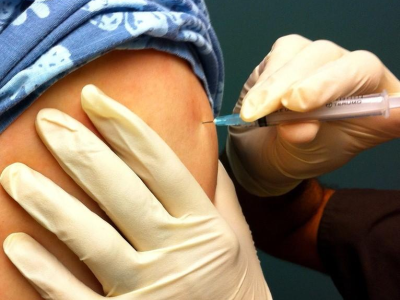FDA announces it won't enforce certain FSMA rules
The Food and Drug Administration (FDA) yesterday announced that, for now, it won't enforce four rules related to the implementation of the Food Safety Modernization Act (FSMA), a law passed in 2011 that signaled the biggest overhaul in the nation's food safety laws in 70 years.
In a press release, FDA Commissioner Scott Gottlieb, MD, said that although the FDA has been working hard to implement provisions of the law, "we recognize that such a fundamental change in our food safety approach may require adjustments along the way to address issues that had not been previously anticipated." He added that the agency values feedback on the rule changes and acknowledges challenges that farmers, manufacturers, and other stakeholders face as the new rules are implemented.
The provisions the FDA doesn't intend to enforce include aspects of the “farm” definition, requirements related to written assurances from a manufacturer’s customers, requirements for importers of food contact substances, and requirements related to certain human food by-products for use as animal food within three of FSMA's rules that relate to human and animal food safety, foreign supplier verification, and growing standards for human food.
"This action will help reduce the burdens on both industry and government and provide the agency the ability to consider the most effective and efficient way forward," Gottlieb said. Along with the announcement, the FDA posted a constituent update and a fact sheet that detailed the scope and rationale for the new decision.
In response to the announcement, Peter Lurie, MD, MPH, president of the Center for Science in the Public Interest (CSPI), said that by indefinitely delaying enforcement of the rules, the Trump administration is undermining the landmark food safety legislation. In a CSPI statement, he said the FSMA was intended to cover the entire food chain, and that the new guidance would create gaps, for now, by exempting some who harvest, package, or hold food produced on farms, and eliminate company-to-company assurances required to identify pathogens to be addressed by downstream processors.
Lurie said the Obama administration delayed the rules for a finite time, along with a public input period, but the new indefinite delays are being unveiled "in a final surprise guidance without public input."
Jan 4 FDA statement
Jan 4 FDA constituent update
FDA guidance for industry
FDA fact sheet
Jan 4 CSPI statement
Filipino government probes 14 deaths for possible Dengvaxia link
Government officials in the Philippines announced today they will investigate 14 deaths of children that may be tied to Dengvaxia, Sanofi Pasteur’s controversial dengue vaccine, Agence France Presse (AFP) reported.
The probe comes 1 day after the government, which last month halted the use of the vaccine, sued Sanofi Pasteur for misrepresentation. In December, Sanofi said Dengvaxia should be used only in people who had previous dengue infections, an announcement that came after 800,000 Filipino schoolchildren received the vaccine.
As of yesterday, two deaths in school-age children had been linked to the vaccine, but now the government said there are 14 more suspicious deaths that occurred after children had been immunized against dengue.
An independent panel of experts will review the medical records of the 14 children and present their findings in the coming weeks.
Jan 5 AFP story
Evidence of microcephaly in Brazil predates Zika
A study today in Pediatrics shows that microcephaly was endemic in two Brazilian cities in 2010, years before the Zika epidemic. The study raises new questions about how accurately microcephaly has been recorded.
The study aimed to establish microcephaly baselines for Brazilian babies before the Zika virus became widely transmitted in the country in 2015. Using 2010 birth cohort studies from two Brazilian cities, Ribeirao Preto and Sao Luis, researchers found that microcephaly was grossly underreported, by as much as 90%.
Using the International Fetal and Newborn Growth Consortium for the 21st Century definition, the scientists found that the prevalence of microcephaly, defined as more than two standard deviations in skull size for gestational age, was higher in Sao Luis (3.5%) than in Ribeirao Preto (2.5%). Several risk factors for microcephaly were identified, including lack of maternal education, maternal smoking during pregnancy, primiparity (only child), vaginal delivery, and intrauterine growth restriction.
Despite international guidelines, microcephaly diagnosis remains difficult, but the Zika virus may have led to increased awareness and reporting, Elizabeth Dufort, MD, and Jennifer White, MPH, concluded in an accompanying commentary.
Jan 5 Pediatrics study
Jan 5 Pediatrics commentary
New polio case recorded in Kandahar Province
The Global Polio Eradication Initiative (GPEI) announced a new case of wild poliovirus type 1 (WPV1) in Kandahar province, Afghanistan, in its weekly report.
Officials confirmed 13 WPV1 cases in Afghanistan in 2017, including the case reported this week. Symptom onset for the latest case was Dec 3. The GPEI also said that Balochistan province in Pakistan has reported an WPV1 case that the agency will make official next week.
A vaccination campaign using the oral polio vaccine is scheduled to take place later this month, targeting 5 million children in Afghanistan.
Globally 21 cases of WPV1 were reported in 2017, according to GPEI, the 13 in Afghanistan plus 8 in Pakistan.
Jan 5 GPEI report
FDA anticipates IV saline shortage to improve in coming weeks
FDA Commissioner Scott Gottlieb, MD, said in a statement yesterday that he expects the shortage of intravenous (IV) saline fluids to improve early this year after manufacturing plants in Puerto Rico were greatly affected by Hurricane Maria and the resulting power loss.
Damage from the September hurricane exacerbated an existing shortage of IV saline and dextrose bags used for patient care. The FDA said in early October it was taking steps to help the island's medical product manufacturing sector. Pharmaceutical and biological products make up 30% of Puerto Rico's gross domestic product, and 10% of all drugs consumed by Americans are made there. Last week the FDA announced that the island's last manufacturing plant, operated by Baxter International, was back on the power grid.
In yesterday's statement, Gottlieb said, "Based on the information we're receiving from the companies, we expect that the shortage of IV saline fluids will improve in early 2018, with continuing improvements in the weeks ahead.
"Moreover, all the other companies that manufacture products that were on our initial list of drugs that we considered critical and at risk of potential shortages—because the drugs were largely or entirely manufactured in Puerto Rico—are now on the power grid. Many of these companies report to us that their production is increasing. While there are still many challenges that remain—for instance, the commercial power grid remains unstable in places—these developments reduce the risk of any future shortages resulting from the impact of the storm on the island's manufacturing sector."
The FDA also said that the return of power to Baxter's plant that the shortage of IV amino acids, a crucial product for patients who need parenteral feeding, also is anticipated to continue to improve in the coming weeks. The agency added that its drug shortage website remains the best source of information regarding product availability.
Jan 4 FDA statement
Dec 28 CIDRAP News scan








